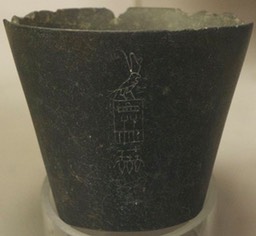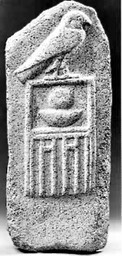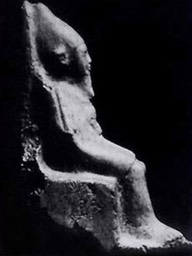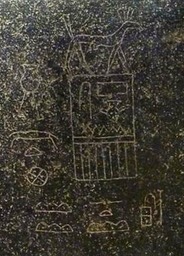Of all the Ancient Egyptian dynasties, the history and chronology of the 2nd Dynasty are among the most difficult to grasp. This is caused by a lack of consistent sources, itself probably the result of a difficult political situation.
Most kinglists as well as Manetho mention several kings who are not attested by the archaeological record. The Turin King-List, the Saqqara King-List and Manetho all have 9 kings in this dynasty.
9 being the number of an Ennead, an association of important gods, it has been proposed that the kinglists contain some fictive names in order to represent the second dynasty as an Ennead. As most kinglists seem to predate the division of what we now call the Early Dynastic Period into separate dynasties, this proposal would seem rather difficult to support.
Several names are only attested in either Upper or Lower Egypt, which could perhaps mean that, at least for some time during the 2nd Dynasty, Egypt was divided into two kingdoms.
| Archaeological record | Abydos List | Saqqara List | Turin King-List | Manetho |
| Hotepsekhemwi | Bedjaw | Baw-Netjer | (Netjer)-Baw | Boêthos |
| Nebre | Ka-Kaw | Ka-Kaw | Ka-Kkaw | Kaiêkhos |
| Ninetjer | Ba-en-Netjer | Ba-netjeru | (Ba)-en-Netjer | Binêthris |
| Weneg-sekhemwi (?) | Wadjnes | Wadjnes | Tlas | |
| Senedy | Sened | Sened | Sethenês | |
| Khaires | ||||
| Neferkare | Aaka / Neferka | Nepherkheres | ||
| Neferkasokar | Neferkasokar | Sesokhris | ||
| hudjefa | hudjefa | |||
| Peribsen | ||||
| Sekhemib Perenmaat | ||||
| Khasekhemwi | Djadjay | Bebti | Bebti | Kheneres |
A comparison of the archaeological record with the king-lists and with Manetho reveals the difficulty to grasp the chronology and history of the 2nd Dynasty.
Horus Hotepsekhemwi is generally accepted to have been the first king of the 2nd Dynasty. Because his name means “the two powerful ones are at peace” it has been suggested that this king reunited Egypt after some turmoil that may have divided the country towards the end of the 1st Dynasty. Hotepsekhemwi’s name was found at the entrance of the tomb of Horus Qa’a, the last king of the 1st Dynasty, indication that Hotepsekhemwi buried Qa'a and must therefore have been his successor, but also that he took this name at the very start of his reign, which contradicts the view that Hotepsekhemwi inherited a divided country.
The succession of the first three kings of the 2nd Dynasty is found on the back of the right shoulder of the statue of a 3rd Dynasty priest named Hotepdief as follows: Hotepsekhemwi, Nebre and Ninetjer.
Statue of Hotepdief bearing the names of the first three kings of the 2nd Dynasty.
Source: Clayton, Kroniek van de Farao's, p. 27.
The first and the last of these kings had tombs at Saqqara, the necropolis of Memphis. Although Nebre’s tomb itself has not (yet) been localised with certainty, a funerary stela found in Memphis would imply that it must be found in the Memphite region as well. Some seal impressions found in Hotepsekhemwi's tomb bearing Nebre's name have led some researchers to think that Nebre may have usurped his predecessor's tomb. Against this it should be noted that the presence of Nebre's name in the tomb of Hotepsekhemwi can equally mean that Nebre buried his predecessor or that he had reasons to inspect it somewhere during his reign.
The move of the royal cemetery from Umm el-Qa’ab in Middle Egypt, where the kings of the 1st Dynasty were buried, to Saqqara represents an important change in tradition, but the scarce archaeological sources have not allowed us to understand its historical, political and religious significance. This move was probably related with the rising importance of Memphis, even though it is not clear which was cause and which was effect.
Equally significant are the changed design of the royal tombs and the fact that the practice of retainer sacrifice was abandoned. Where the 1st Dynasty tombs were more a collection of pits cut out into the ground, the known royal tombs of the early 2nd Dynasty consisted of long corridors dug into the ground, with several narrow storage rooms to the left and right of them. At the end of the corridor lay the burial chamber. This structure was presumably covered with a mudbrick superstructure.
During the reign of Hotepsekhemwi an early form of the solar god, Netjer-akhti, meaning “the god of the horizon”, was worshipped. The name of Hotepsekhemwi’s successor, Nebre, which means “Re (the sun) is the master”, may demonstrate the new dynasty's support of the solar god, whose cult was centred at Heliopolis, to the north east of Memphis.
There are several indications of a collapse of central authority at the end of the reign of the third king of this dynasty, Ninetjer. Before order was re-established under a single rule at the end of the Dynasty, the country appears to have been ruled by a number of poorly attested kings several of which may have controled only parts of the country.
Ninetjer's assumed successor is known only by his Nebti Name, Weneg. This name has only been found at Saqqara, which probably means that Weneg may only have held power over the north of Egypt.
The second name mentioned after Ninetjer in the kinglists, Sened, is not known through any contemporary sources at all. The oldest known sources mentioning this name are dated to the 4th Dynasty. One of the sources, found in the tomb of a man named Sheri, refers to a mortuary cult for Sened at Saqqara.
The same source also suggests a connection between Sened's cult and that of Peribsen, a king of the 2nd Dynasty who is only attested in the south of Egypt. This could mean that Sened and Peribsen either were the same person, or that they each ruled a part of the country at the same time and that the division of Egypt at that time was one of peaceful co-existence.
The name Peribsen has not been found outside of the south of Egypt. He is the only known king whose official name refers to the god Seth instead of Horus. The change in the titulary is significant because it does not only represent an import break with the past, but also because in the later religious tradition, both gods were sometimes considered as adversaries. This may indicate a change in the royal ideology, or it may have been the result of the division of Egypt into two territories.
Even though Peribsen enjoyed a funerary cult at Saqqara, at least from the 4th Dynasty on, he was buried at the royal cemetery of the 1st Dynasty of Umm el-Qa'ab.
A name closely associated with Peribsen's is that of the Horus Sekhemib. Seal impressions with this name have been found at the entrance of Peribsen's tomb. As was the case with Hotepsekhemwi and Qa’a, this probably means that Sekhemib saw to the last rites of Peribsen, making him Peribsen’s successor. There are, however, many Egyptologists that tend to believe that Peribsen probably his reign as Horus Sekhemib and then, for unknown reasons, changed his name to Seth Peribsen.
Statue of Horus-Seth Khasekhemwi.
Source: Wikipedia
The last king of the 2nd Dynasty started his reign as Horus Khasekhem. Because this name is only attested at Hierakonpolis, in the south of Egypt, it is believed that Khasekhem only ruled this part of the country. Inscriptions from his reign point to rebellions and war against a "northern enemy". If this “northern enemy” can be taken to be located in Egypt, it is possible that during Khasekhem, the relationship between the two kingdoms had taken a turn for the worse.
Khasekhem’s war would ultimately re-unite Egypt under one single reign, at which point the Horus Khasekhem changed his name to Horus-Seth Khasekhemwi. This name combines the traditional Horus with Peribsen's Seth. As both Peribsen and Khasekhemwi had a tomb at Umm el-Qa’ab, it is very unlikely that Peribsen was the “northern enemy” the inscriptions refer to.
Khasehemwi’s name is modelled after the name of the founder of the dynasty, Hotepsekhemwi and means “the two powerful ones have arisen”, to which the addition 'the two lords are at peace within him' also hints at the re-unification of a divided country. This is confirmed by the fact that Khasekhemwi’s name has been found throughout the country, the first king since Ninetjer for whom this has been the case.
Click on the thumbnails below to learn more about the kings of the 2nd Dynasty.



